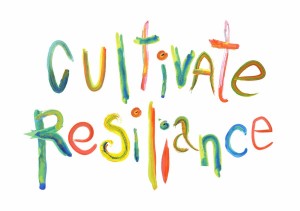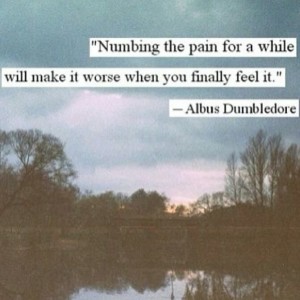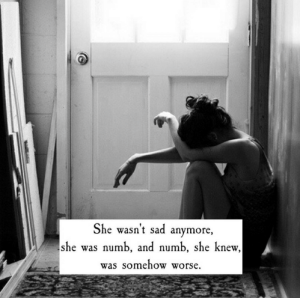
The third guidepost outlined By Brené Brown in her work is:
Cultivating a Resilient Spirit: Letting Go of Numbing and Powerlessness
What is Resilience? The way I always describe resilience is by calling it my ‘bounce back factor’. Very simply, it is the ability to get back up again and continue to move forward toward you goal or objective after a setback.
Your level of resilience can be influenced by the circumstance, the number of times you have experienced a setback or even how you are feeling on a given day. I know that some days I don’t feel resilient at all but overall I have a pretty good bounce-back factor.
I have always thought of resilience as a muscle, something that we can build up or allow to weaken depending on our mindset.
One of the keys to being resilient and to building it is to accept that we are who we are and we don’t need to be any other way. As we learned in the first guidepost Cultivating Authenticity, it is better to be disliked for who we are than to be disliked for who we are not and this applies to this guidepost too. Having a setback by being our authentic selves is easier to bounce back from than if we are not. It may not hurt any less but we can pick ourselves up and keep going, if that is what we have chosen to do, knowing that we are being true to ourselves and our values.
In the Gifts of Imperfection, Brené Brown says that recent research indicates these as the 5 most common factors of resilient people:
- They are resourceful and have good problem solving skills
- They are more likely to seek help
- They hold the belief that they can do something that will help them to manage their feelings and cope
- They have social support available to them
- They are connected with others such as family or friends
In my experience, other common characteristics of those displaying a high degree of resilience include:
- An ability to extract personal learning from the experience;
- Having a range of tools and skills to be able to draw on to overcome the setback;
- Displaying flexibility in the way they think – being open to exploring new perspectives and analysing why things didn’t go to plan;
- Having a strong drive to achieve the vision or goal that has been set;
- Beinging willing to receive feedback, and
- Never, ever giving up!
 Unfortunately. After difficult situations some people opt to numb the pain or discomfort they feel. When people feel overwhelmed, afraid or feel vulnerable they can slip into a very dark place and look for comfort in things that cause this feeling to go away. Numbing the pain to ‘take the edge off’ doesn’t last – as soon as we stop the numbing strategy the pain and discomfort returns and those sharp edges return to our lives. As Albus Dumbledore from Harry Potter says:
Unfortunately. After difficult situations some people opt to numb the pain or discomfort they feel. When people feel overwhelmed, afraid or feel vulnerable they can slip into a very dark place and look for comfort in things that cause this feeling to go away. Numbing the pain to ‘take the edge off’ doesn’t last – as soon as we stop the numbing strategy the pain and discomfort returns and those sharp edges return to our lives. As Albus Dumbledore from Harry Potter says:
“Numbing the pain for a while will make it worse when you finally feel it”
We all numb at times – think about what you avoid and how you choose to avoid it – food, alcohol, work, TV? It may not be obvious at first and if it has been your habit to numb in this particular way for a long time you may not even recognise the behaviour as a numbing strategy.
Numbing is different to comfort. There are things we can do to bring us comfort like curling up on the couch and watching a good movie with a chocolate treat. Comfort turns to numbing when we are watching hour after hour of TV and eating a block of chocolate or more. We each know our line between comfort and numbing but we probably don’t take the time to be conscious of what we are doing and stop ourselves. One way to challenge ourselves when we identify this behaviour is to ask ourselves two questions:
What feeling is this behaviour creating for me?
What feeling is this behaviour masking for me?
 You will be able to reveal the ‘pain’ that you are avoiding from one of these answers.
You will be able to reveal the ‘pain’ that you are avoiding from one of these answers.
Brené Brown says that the issue with numbing is that we can’t selectively numb emotions – “we by default numb them all” – if we numb sadness we numb joy, if we numb anger then we also numb passion and if we numb fear we also numb excitement.
Next time you find yourself numbing, challenge yourself to identify the cause and allow yourself to feel the emotions you are desperately trying to avoid. This is empowering in itself and may give you the energy you need to move yourself forward.
We all need a resilient spirit to carry us toward our goals and through any doubt or fear we may experience along the way. Brené says:
“Powerlessness is dangerous. For most of us the inability to effect change is a desperate feeling. We need to believe that we can effect change if we want to live and love with our whole hearts.”
Until next time
Helen




